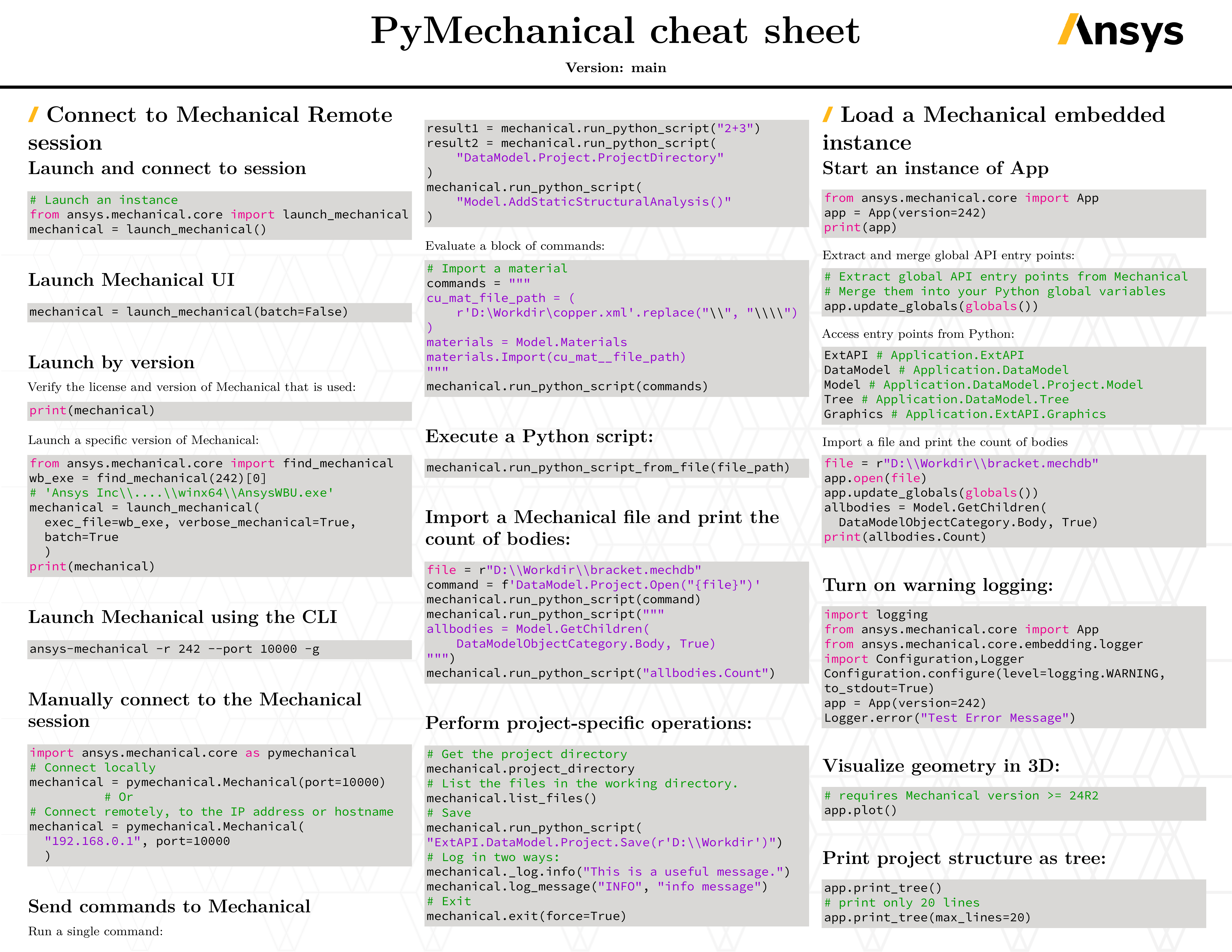

Python API to interact with Ansys Mechanical (FEA software for structural engineering) from 2023R2 and later versions.
Learn how to install and use PyMechanical. Explains architecture and background.
Install Architecture Docker
Dive into examples created using PyMechanical.
Basic Technology-showcase Tips
Understand PyMechanical API endpoints and their capabilities
Classes Methods Error handling
A Mechanical object implemented in .NET is directly loaded into Python memory.
Python.NET no-GUI
Using gRPC, Mechanical operates as a server, ready to respond to client requests.
gRPC GUI
Overview of Ansys Mechanical scripting.
ACT Threading
Frequently asked questions and their answers.
How Why What
Issues and limitations on both PyMechanical and Mechanical.
23R2 24R1 24R2
Learn how to contribute to the PyMechanical codebase or documentation.
Test Documentation Issues

